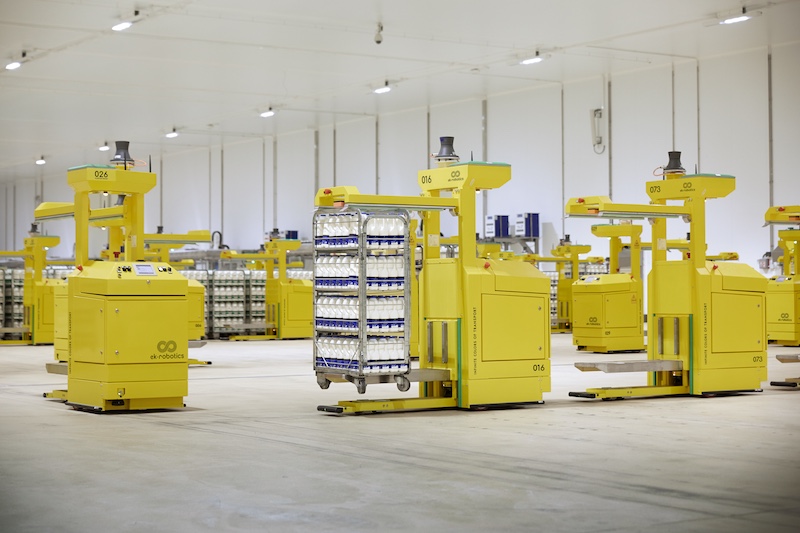In today’s dynamic business environment, small and medium-sized businesses (SMBs) are increasingly adopting automation to enhance productivity and remain competitive. One key area where automation can deliver significant value is in logistics and inventory management, particularly as businesses face challenges posed by labor shortages and the increasing complexity of warehouse operations. Understanding how to implement automation effectively can position SMBs for growth and efficiency, particularly in environments where traditional methods may not suffice.
The first step toward successful automation begins with identifying the processes that can benefit most from it. For logistics and inventory management, consider areas such as order fulfillment, inventory tracking, and even customer service interactions. By targeting these specific processes, businesses can assess which tasks are repetitive and time-consuming, making them ideal candidates for automation.
Once potential processes are identified, the next step is to evaluate available tools that can support automation. Platforms such as Make or Zapier offer user-friendly interfaces that allow businesses to connect various applications and automate workflows without needing extensive coding knowledge. Both platforms enable users to create automated processes, known as “zaps” in Zapier and “scenarios” in Make, that can trigger actions based on specific events. For example, an SMB could set up a trigger that automatically updates inventory levels whenever a sale is made, significantly reducing the risk of stockouts or overstock situations.
While the technical implementation of automation tools requires careful planning, the benefits can be substantial. Automation streamlines workflows, enhances accuracy, and frees employees from mundane tasks, allowing them to focus on more strategic initiatives. It’s essential to keep in mind that successful automation requires input and collaboration from multiple departments, including IT, operations, and human resources. Engaging stakeholders early in the planning process can facilitate a smoother implementation.
As businesses deploy automation technologies, they should also be mindful of potential risks. For instance, while automation can lead to increased efficiency, there’s the risk of technology failure or unforeseen issues that could disrupt operations. Therefore, it is crucial to conduct thorough testing before fully implementing any automated solution. This includes running simulations or pilot programs in controlled environments to identify any flaws that need addressing. Additionally, establishing contingency plans will help ensure that the business can navigate any challenges that arise during the transition.
Measuring the return on investment (ROI) of automation is another critical component of this process. ROI can be assessed through various metrics, including reductions in labor costs, improved order accuracy, and quicker turnaround times. Businesses can establish baseline performance metrics before implementing automation and compare them post-implementation to interpret the financial impacts accurately. Furthermore, it is advisable to continuously monitor and optimize automated processes to ensure they remain effective and adapt to changing business environments.
Adopting automation is not just about introducing technology; it is about transforming the culture within the organization. Emphasizing a mindset geared toward efficiency and innovation can help drive adoption among employees. Preparing the workforce through training programs that enhance digital skills is crucial for maximizing the benefits of automation. While some may fear job displacement due to technology, educating staff on how to collaborate with automation tools will foster a more positive perception and engagement.
As an example of advanced automation, NEC has recently developed a proprietary AI technology allowing robots to navigate complex environments effectively. By generating optimal travel paths in real-time—even in spaces cluttered with obstacles—this innovation exemplifies the potential of AI-driven automation in logistics. For SMBs looking to enhance their operations, lessons from such advancements could prove beneficial. Although the costs associated with cutting-edge technologies may seem high, the potential for increased efficiency and substantial returns, such as those demonstrated through shortened travel times for robots, make it a worthy consideration.
To implement such innovations based on a step-by-step approach, SMBs can begin by assessing their logistics needs and exploring viable partnerships with technology providers to facilitate access to sophisticated AI solutions. Following this, investing time in training staff to work alongside these technologies will ensure smooth integration into existing workflows. Additionally, continuous evaluation of performance and outcomes will allow businesses to adapt strategies effectively.
In conclusion, automation provides SMBs with the opportunity to enhance efficiency, lower costs, and improve service deliverability. By taking a structured and strategic approach, businesses can harness the power of AI and automated tools to navigate the complexities of modern logistics successfully. Effective implementation of these technologies, while monitoring potential risks and ROI, is key to realizing their full potential.
FlowMind AI Insight: As SMBs strive to adopt automation in their operations, they should focus not only on technology but also on fostering a culture of innovation and continuous improvement. By doing so, they position themselves to leverage these advancements effectively, turning potential challenges into opportunities for growth.
Original article: Read here
2025-08-28 15:56:00

